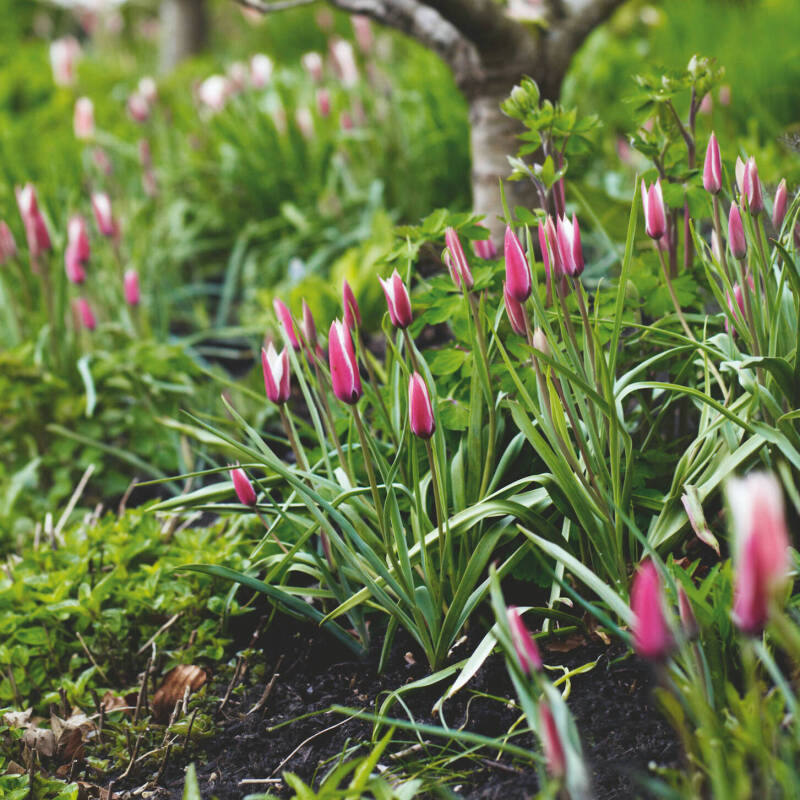The man from ABC Tidy Gardens is here to look at our hedges, which have become huge and wild. The oversized parameters give the place a neglected look. The idea of a “tidy garden” is an amusing one to me but it’s a key, I believe, to the success of this contracting company: delivering the promise that if a garden is neat all will be well. But for whom?
Certainly not for the other creatures who live here. From the bottom of the food chain to the top, humans are the only ones who crave extreme tidiness. Sprucing up too much can imperil the other species that share the garden with us. “Our gardens are not just for us, even though we pay the mortgage on them,” says Nigel Colborn, garden writer and broadcaster. “We all need to learn to love grotty corners,” he says. “To tolerate a bit of scruff.”
(N.B.: If you are ready to say goodbye to a conventional lawn see Fields of Green: Five Favorite Lawn Substitutes.)
Photographs by Nigel Colborn.

Above: A perennial meadow in Nigel’s garden. The grass is allowed to grow longer in certain areas and wildflower plugs have been added. Wildflowers also pop up on their own.
Nigel Colborn might talk like a neo-hippy but is a card-carrying member of the horticultural establishment, having judged show gardens at the Chelsea Flower Show. Many gardens on the Royal Horticultural Society circuit are marked down, he adds, because too scant attention has been paid to actual plants, with all the fascination for design and what he calls “hardware.”

Above: A path cut through the long grass. “We are in crisis,” says Colborn. Even those of us who put plants first do not often realize our responsibilities as gardeners. We are good at setting up nature reserves but are not so good at saving the less glamorous species that live by the back door. Roadside verges and patches of wasteland are Nigel’s “unofficial spaces,” all under constant threat of being spruced up, due to our fear of untidiness. “There used to be a phenomenally rich biodiversity in these places,” says Colborn. “Why not have a garden that is attractive and pleasant most of the time?” At intervals it can relax and we should too.

Above: “We need to think: ‘It doesn’t look pretty but we’re going to tolerate it.'” Specifically: leave apples on the ground. Don’t rake up leaves. Don’t fertilize the lawn. Windfall apples will attract slugs which feed hedgehogs, and during the winter this ground-level food appeals to blackbirds and field fares. Leaves will be dragged underground by worms, and grass which has not had clover banished will have a natural nitrogen boost. Other lawn irregularities like daisies and moss are not exactly a disaster. “Our lawn wouldn’t win any prizes,” says the former Royal Horticultural Society adviser cheerfully. “But it’s green and bouncy and nice to sit on.”

Above: By growing a lawn a few inches—or feet—longer it is interesting to see what will pop up, plants that lay dormant during the mowing years. Nigel planted fritillaries in his long grass and up popped the Cuckoo Flower. Let an area of your garden go shaggy, and plant meadow-like perennials to grow through the grass.
Be mindful of conditions, for instance consider Bird’s Foot Trefoil ($36.90 for a pound of seeds, from Amazon) for sun and Dog Violet (£13.95 for a four-pack from Buy Trees Online) in the mossy shade. Cut a path through the long grass and as Nigel says, “make a compromise between idleness and design.”

Above: It’s not necessary to go out and spend a fortune on wildflowers. Why not keep the ones you already have—also known as weeds? They attract pollinators and invertebrates and keep everything buzzing. Clover (shown here with forget-me-nots) not only feeds the grass but feeds the bees, and dandelions, buttercups, poppies are all ready to help out. Tolerate ivy: this is the ultimate test. “People hate ivy and once it gets big it is a frightful nuisance,” says Nigel, who also goes by the blog and twitter name of @plantmadnige. “But it harbors a phenomenal amount of insects in its branches and attracts birds which eat the insects.
“Ivy provides nectar when there is nothing around and the fruits are eaten by field fares and redwings in winter.” Ivy (pictured below with sweet violet) is a crucial plant. For more, see The Ideal Ivy.

Above: Lawn fanatics: relax. Instinctive tidy-uppers: ditto. “I’m trying to develop something more akin to the slow food movement,” says Colborn. “If you let leaves lie where they fall, you will get a more diverse population of invertebrates at the bottom of the food chain, and it goes up from there.”
For more of Kendra’s weekly adventures, see The English Gardener.










Have a Question or Comment About This Post?
Join the conversation